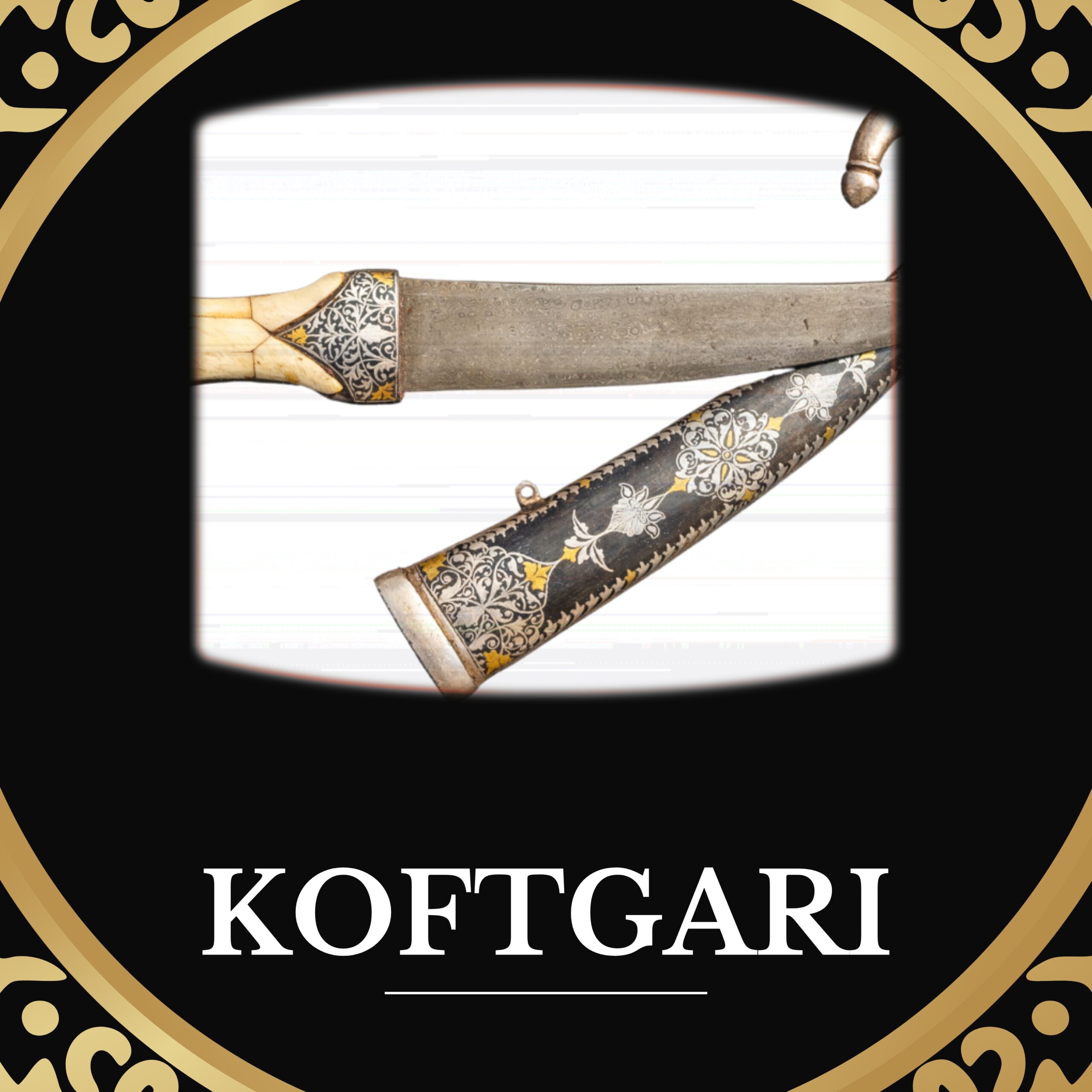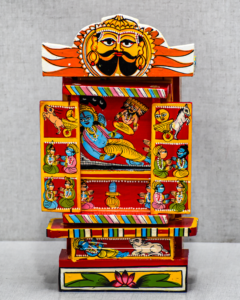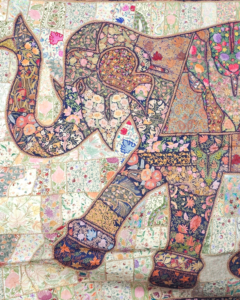Koftgari is an art form of Rajasthan, India, that involves the inlay of gold and silver wire on iron objects. It is a type of damascening, which is a metalworking technique that has been practiced for centuries in many cultures around the world.
It is believed that the art of Koftgari originated in Persia and was introduced to India by the Mughal craftsmen in the 16th century.
It quickly became popular among the rulers of Rajasthan, who then used it to decorate their weapons, armor, and other objects.
Koftgari is a very detailed and labor-intensive process. The iron object is first heated and then hammered to create a smooth surface.
The wires of gold or silver are then cut into thin strips and pressed into the surface of the iron using a special tool.
The wire is then heated again and polished to create a smooth, shiny finish.
Koftgari objects are often decorated with intricate designs, such as flowers, animals, and geometric patterns. They can be used for a variety of purposes, including weapons, jewelry, furniture, and decorative objects.
Today, koftgari is still practiced in Rajasthan, but it is a dying art form. There are only a few remaining master craftsmen who know how to create this beautiful and intricate work.
Here are some of the characteristics of koftgari art:
- It is a type of damascening, which is a metalworking technique that involves the inlay of gold or silver wire on iron objects.
- It is a very detailed and labor-intensive process.
- Koftgari objects are often decorated with intricate designs, such as flowers, animals, and geometric patterns.
- They can be used for a variety of purposes, including weapons, jewelry, furniture, and decorative objects.
- Koftgari is a dying art form, but there are still a few remaining master craftsmen who know how to create this beautiful and intricate work.

The community that practices this beautiful art is the Sikligar community.
The Sikligars are a community of ironsmiths or blacksmiths who specialize in making and polishing weapons. They are found in the states of Gujarat, Haryana, Rajasthan and Punjab. They are either Hindu or Sikh, depending on the region and history.
The word Sikligar comes from Persian, meaning “polisher of swords”.
The Sikligars have a close connection with Sikhism, as they were employed by Guru Gobind Singh, the tenth Sikh Guru, to make weapons for the Khalsa army.
The Guru gave them the name Sikligar and initiated them into the Sikh faith. One of the first Sikligars was Ram Chand, who fought with the Guru at the battle of Chamkaur and accompanied him out of the fort.
The Sikligars have a proud heritage of craftsmanship and bravery, but they also face many challenges in the modern world.




